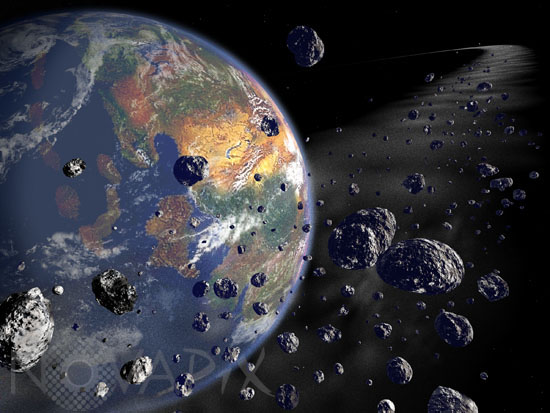Photo Agency - Astronomy - Space - Nature

Ring arcs over the Permian Earth
author: Walter B. Myers/Novapix
reference: t-glb99-00011
Image Size 300 DPI: 20 * 15 cm
A dusty ring arc orbits four thousand miles above Earth's equator. The massive continent below is Pangea and the ocean to the west is Panthalassa. This is how the Earth may have appeared during the end of the Permian period, a time just prior to the appearance of the dinosaurs, when continental drift was pulling Pangea apart into the seven continents we know today.
260 million years ago the Earth may have been host to ring arcs similar to the incomplete rings that currently circumscribe the planet Neptune. Unlike Neptune's rings, the ring arcs around the Earth were of terrestrial origin, debris thrown into orbit by a collision with a large meteorite or comet. The debris consisted of tiny pebbles that were once molten droplets of ejecta, long since cooled in the vacuum of space. The orbit of the ring arc would eventually decay, returning the debris back to Earth as a shower of meteorites. This debris is found on Earth's surface today in the form of dark, glassy objects known as tektites.
Contact : Stéphane Aubin +33-(0)9-51-26-53-76
© Novapix - All rights reserved


